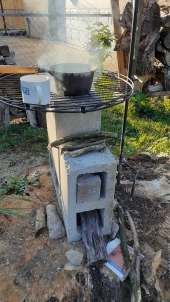Thanks for the reply! The riser is 18 inches and the longest feed tube is 10 so I should be good on that part, after reading your post it dawned on me that I could test these somewhat by proping the pieces together with fire brick. I know its not a good test but its cheaper than buying a lot of metal right now

. So far I have tried 1 and 3 and neither works as well as a brick rocket setup. I'm not sure I understand why but both seemed pretty finicky and number 3 allowed me to cook on it but after that even tho there was flame in the riser is was lazy and not putting out much if any heat. Hopefully tonight I will try #4 and see how that works. If not maybe back to the drawing board.
Thanks for the input
Rae








